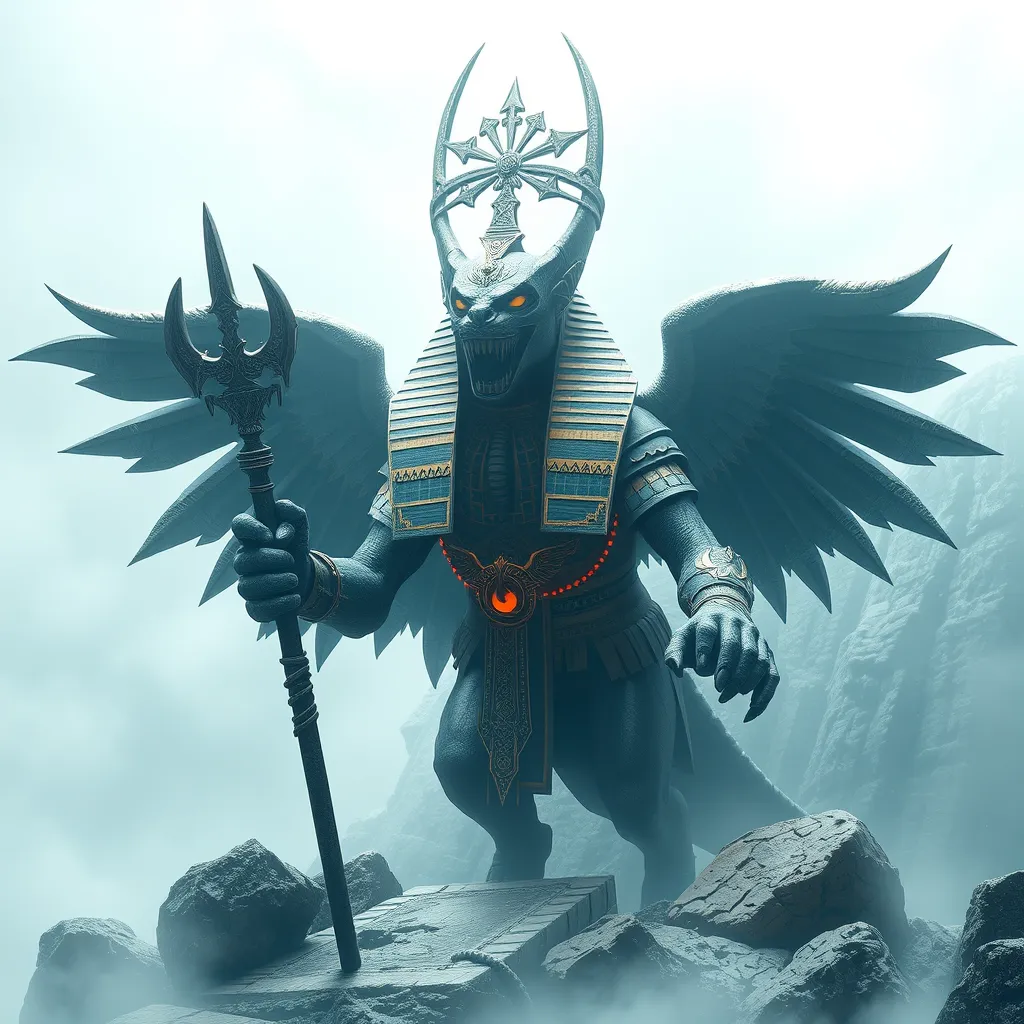The Guardian of the Underworld: The Myth of Ammut, the Devourer of the Damned
I. Introduction
Ancient Egyptian mythology is a rich tapestry of gods, goddesses, and mythical creatures that reflect the beliefs and values of one of history’s most fascinating civilizations. Among these figures, Ammut, known as the Devourer of the Damned, holds a unique and significant place in the understanding of the afterlife. She represents both the fear of judgment and the consequences of one’s life choices, embodying the ultimate fate for those who fail the tests of the afterlife.
II. The Origins of Ammut
Ammut’s roots can be traced back to ancient Egyptian texts, where she is often mentioned in relation to the afterlife and the judgment of souls. Her name, which translates to “devourer,” reflects her fearsome role within the context of the Duat, the Egyptian underworld.
Historically, Ammut is depicted as a composite creature with the head of a crocodile, the body of a lion, and the hindquarters of a hippopotamus. This unique combination of characteristics symbolizes her ferocity and strength, attributes necessary for her role as a guardian of the damned.
Artistic representations of Ammut can be found in various forms, including wall paintings, sculptures, and hieroglyphs, showcasing her as a fearsome presence in the afterlife. In many depictions, she is shown poised to devour the hearts of those deemed unworthy, highlighting her function as both a punisher and a guardian.
III. The Role of the Underworld in Egyptian Beliefs
The Duat is a complex realm that represents the afterlife in ancient Egyptian belief. It is a place where souls journey after death, facing various challenges and judgments. The concept of the afterlife was central to Egyptian culture, emphasizing the importance of living a just life to secure a favorable outcome after death.
At the heart of this belief is the judgment process, known as the Weighing of the Heart. This ceremony is a critical aspect of a soul’s journey, determining whether they would enter the blissful fields of the afterlife or face the dire consequences of Ammut’s devouring jaws.
IV. The Weighing of the Heart Ceremony
The Weighing of the Heart ceremony is a pivotal moment in the journey of the deceased. It involves the heart of the deceased being weighed against the feather of Ma’at, the goddess of truth and justice. The process unfolds as follows:
- The deceased is led to the Hall of Two Truths, where Osiris, the god of the underworld, presides over the judgment.
- Anubis, the god of mummification and the afterlife, assists in the weighing process, ensuring that it is conducted fairly.
- If the heart is lighter than the feather, it signifies a life lived in accordance with Ma’at, allowing the soul to enter the afterlife.
- If the heart is heavier, it indicates wrongdoing and a life filled with sin, leading to Ammut’s intervention.
V. Ammut’s Function as the Devourer
Ammut’s primary role in the judgment process is that of the devourer of the damned. If a soul’s heart is found wanting, she is tasked with consuming it, thereby ensuring that the individual can never achieve peace in the afterlife. This punishment is both a deterrent and a finality for those who have not lived justly.
Physically, Ammut’s fearsome appearance serves to instill dread in the hearts of the living. Her characteristics include:
- A crocodile’s head, symbolizing ferocity and danger.
- A lion’s body, representing strength and power.
- A hippopotamus’ hindquarters, embodying the unpredictable and fierce nature of the creature.
As a guardian of the underworld, Ammut not only punishes the unworthy but also upholds the balance of justice in the realm of the dead.
VI. Symbolism and Interpretation of Ammut
Ammut serves as a potent symbol of divine justice within Egyptian mythology. Her role emphasizes the importance of morality and the consequences of one’s actions. In a society that valued truth and order, Ammut’s existence illustrated the balance between mercy and punishment.
The duality of her character can be interpreted in several ways:
- Ammut as a necessary force for maintaining cosmic order, ensuring that only the worthy enter the afterlife.
- Her fearsome nature reflects the seriousness of ethical living, reinforcing the idea that one’s actions have lasting repercussions.
VII. Cultural Legacy and Influence
The myth of Ammut has transcended ancient Egyptian culture, continuing to influence modern interpretations of death and the afterlife. Her image and story have been referenced in various forms of contemporary media, including literature, film, and art.
Some examples of Ammut’s representation in modern culture include:
- Depictions in movies and television shows that explore ancient mythology.
- Artistic interpretations that draw on her fearsome attributes to symbolize judgment and morality.
- Literature that revisits themes of justice and the afterlife, often referencing concepts from ancient Egyptian beliefs.
VIII. Conclusion
Ammut’s significance within Egyptian mythology cannot be overstated. As the Devourer of the Damned, she embodies the critical themes of judgment, morality, and the consequences of one’s actions in life. Her story serves as a cautionary tale, reflecting the fears and beliefs of the ancient Egyptians about the afterlife.
The enduring fascination with ancient myths, such as that of Ammut, continues to resonate in modern society, inviting reflection on moral implications that remain relevant across time. Through her, we are reminded of the delicate balance between justice and mercy, a theme that echoes throughout human history.




